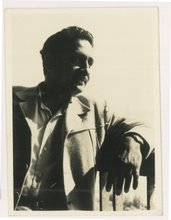
Papa Ajoba’s recipe for colours:
Around 1942-43 when Papa ajoba joined Raj Kamal they used to make their own make up. Described below are the materials and the process by which they created colours & powders.
Coloured Foundation: We used to mix coloured powder that was used for painting houses with petroleum jelly in a doctor’s mixing plate with a knife that was flexible. Then we took zinc powder and mixed it with the coloured powders. After making the colour we would boil it, then strain it with cloth, then fill it in containers, so we had: whites, blue, blacks. These were the lining or the base colours.
Max Factor came to India around 1939 or 1940. Before that there was only one German Company called Leichner. We used to get sticks of colour from them but it was really hard. So used to take a little from the stick on our hands and then ‘pat on that make up’.
Max factor was expensive and our lining colours were better. Max Factor had tubes that were numbered. 21 to 31 for the Indian skin, ladies used numbers 27, 28, 29 and for the gents we used 30, 31.
Right at the start around 1904 in theatre they used use powders and water and we used to call it water painting. They used to use this water paint on their hands and face. Therefore the theatrical white make up in early theatre and also early cinema. For.e.g. in Phalke; films the faces look white. This was also because in early days the lights, both in theatre and cinema were not so powerful and the bright white faces caught the light better.
At a point in time grease used to be mixed with coloured powders or paint. But big theatre stars like Bal Gandharva used ‘loni’ i.e. homemade butter to mix the colours instead of grease.
Coloured Powders: The coloured powders were made of French chalk which is white in colour. You had to grind the French chalk and make sure that there were no solid particles and the powder had to be soft. Then to that powder we would add whatever colour that we wanted.

No comments:
Post a Comment